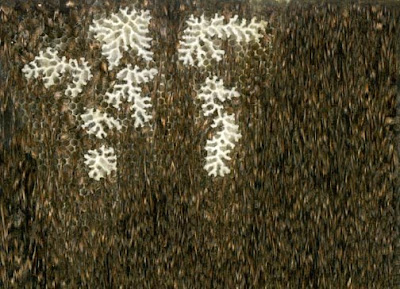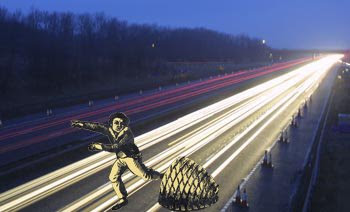MAN RAY
Emmanuel Radnitzky (August 27, 1890 – November 18, 1976)
Man Ray, born Emmanuel Radnitzky (August 27, 1890 – November 18, 1976), was an American artist who spent most of his career in Paris, France. Perhaps best described simply as a modernist, he was a significant contributor to both the Dada and Surrealist movements, although his ties to each were informal. Best known in the art world for his avant-garde photography, Man Ray produced major works in a variety of media and considered himself a painter above all. He was also a renowned fashion and portrait photographer.
RAY-0-GRAMS
The technology of photography was one of the favorite media of the Dada artist Man Ray; his inventive technique of placing objects on light-sensitized paper as in his Rayogram, (1922), showed the abstract possibilities of photograph. He was always exploring new mechanical ideas and "his crisp and ethereal photographs and maliciously witty objects were a revelation" (Gale 197)."When I saw I was under attack from all sides, I knew I was on the right track."
-Man Ray
-Man Ray
“I do not photograph nature. I photograph my visions.”
–Man Ray
–Man Ray
An original is a creation motivated by desire. Any reproduction of an originals motivated be necessity. It is marvelous that we are the only species that creates gratuitous forms. To create is divine, to reproduce is human.
–Man Ray
 All critics should be assassinated.
All critics should be assassinated.
–Man Ray
 All critics should be assassinated.
All critics should be assassinated.–Man Ray
 I paint what cannot be photographed, that which comes from the imagination or from dreams, or from an unconscious drive.
I paint what cannot be photographed, that which comes from the imagination or from dreams, or from an unconscious drive.–Man Ray
 I photograph the things that I do not wish to paint, the things which already have an existence. -Man Ray
I photograph the things that I do not wish to paint, the things which already have an existence. -Man RayOf course, there will always be those who look only at technique, who ask 'how', while others of a more curious nature will ask 'why'. Personally, I have always preferred inspiration to information.
-Man Ray
-Man Ray
-Man Ray














































